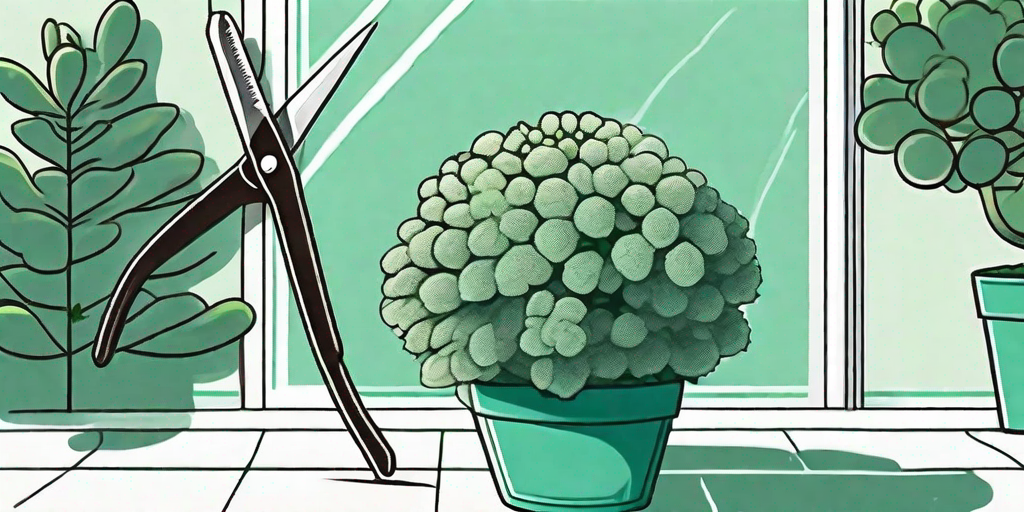
Ah, the sedum, a garden's best friend and a gardener's delight. Known for its hardiness and versatility, this perennial plant is a favorite among both novice and expert gardeners. But, like all good things in life, sedum requires a little TLC to truly thrive. And that's where trimming comes in. But don't worry, dear reader, we're not talking about a high maintenance diva plant here. With a little knowledge and a pair of sharp shears, you'll have your sedum looking shipshape in no time.
The Art of Trimming Sedum
Trimming sedum isn't just about keeping your garden looking neat and tidy. It's about encouraging healthy growth, preventing disease, and ensuring your sedum is the belle of the garden ball. But before you go hacking away at your beloved sedum, let's take a moment to understand the why, when, and how of trimming.
Why trim, you ask? Well, trimming helps remove dead or diseased parts of the plant, which not only improves the plant's overall health but also prevents the spread of disease. It also encourages the plant to grow more compactly, which can help prevent legginess and improve the plant's overall appearance. And let's not forget, it also helps to promote more blooms. Who doesn't want more of those beautiful, star-shaped flowers?
When to Trim
Timing is everything when it comes to trimming sedum. Trim too early, and you risk damaging new growth. Trim too late, and you might not see the benefits until the next growing season. The best time to trim sedum is in early spring, just as new growth is starting to appear. This gives the plant plenty of time to recover before the growing season gets into full swing.
But wait, there's more! There's also a second, lesser-known time to trim sedum: in late summer or early fall, after the plant has finished blooming. This late-season trim is optional, but it can help to tidy up the plant and prepare it for winter.
How to Trim
Now that we've covered the why and when, let's get down to the how. Trimming sedum is a simple process, but there are a few key steps to follow to ensure you're doing it right. First, you'll need a sharp pair of pruning shears. Dull shears can damage the plant and make the process more difficult than it needs to be.
Next, you'll want to identify the parts of the plant that need trimming. Look for any dead, diseased, or damaged stems and leaves. These are your primary targets. But you can also trim healthy stems to help shape the plant and encourage more compact growth.
Once you've identified your targets, it's time to make the cut. Aim to cut just above a leaf node, which is where a leaf or branch connects to the stem. This will encourage new growth at that point. And remember, it's better to under-trim than over-trim. You can always trim more later, but you can't un-trim a stem.
Common Trimming Mistakes to Avoid
Even the most seasoned gardeners can make mistakes when it comes to trimming sedum. But fear not, dear reader, for we are here to help you avoid these common pitfalls.
One of the most common mistakes is over-trimming. It's easy to get carried away with the shears, especially if you're a perfectionist. But remember, sedum is a hardy plant that doesn't need a lot of pruning. A little trim here and there is usually all it needs.
Another common mistake is trimming at the wrong time. As we mentioned earlier, the best time to trim sedum is in early spring or late summer/early fall. Trimming at other times can damage the plant and hinder its growth.
Finally, using dull or dirty shears is a big no-no. Dull shears can damage the plant, and dirty shears can spread disease. Always make sure your shears are sharp and clean before you start trimming.
FAQs about Trimming Sedum
Can I trim sedum in winter?
While it's possible to trim sedum in winter, it's not recommended. The plant is dormant during this time, and trimming can disturb its rest. It's best to wait until early spring, just as new growth is starting to appear.
How much should I trim?
As a general rule, you should aim to remove about a third of the plant's total height. But remember, it's better to under-trim than over-trim. You can always trim more later if needed.
What should I do with the trimmings?
Don't throw those trimmings away! Sedum is a great plant for propagation. Simply stick the cut ends into some well-draining soil, and with a little patience, you'll have new sedum plants before you know it.
Conclusion
And there you have it, folks! The ins and outs of trimming sedum. With a little knowledge and a pair of sharp shears, you'll be a sedum trimming pro in no time. So go forth, dear reader, and trim with confidence. Your garden (and your sedum) will thank you.
Remember, gardening is not just about the destination, but also about the journey. So take your time, enjoy the process, and don't forget to stop and smell the sedum along the way.















